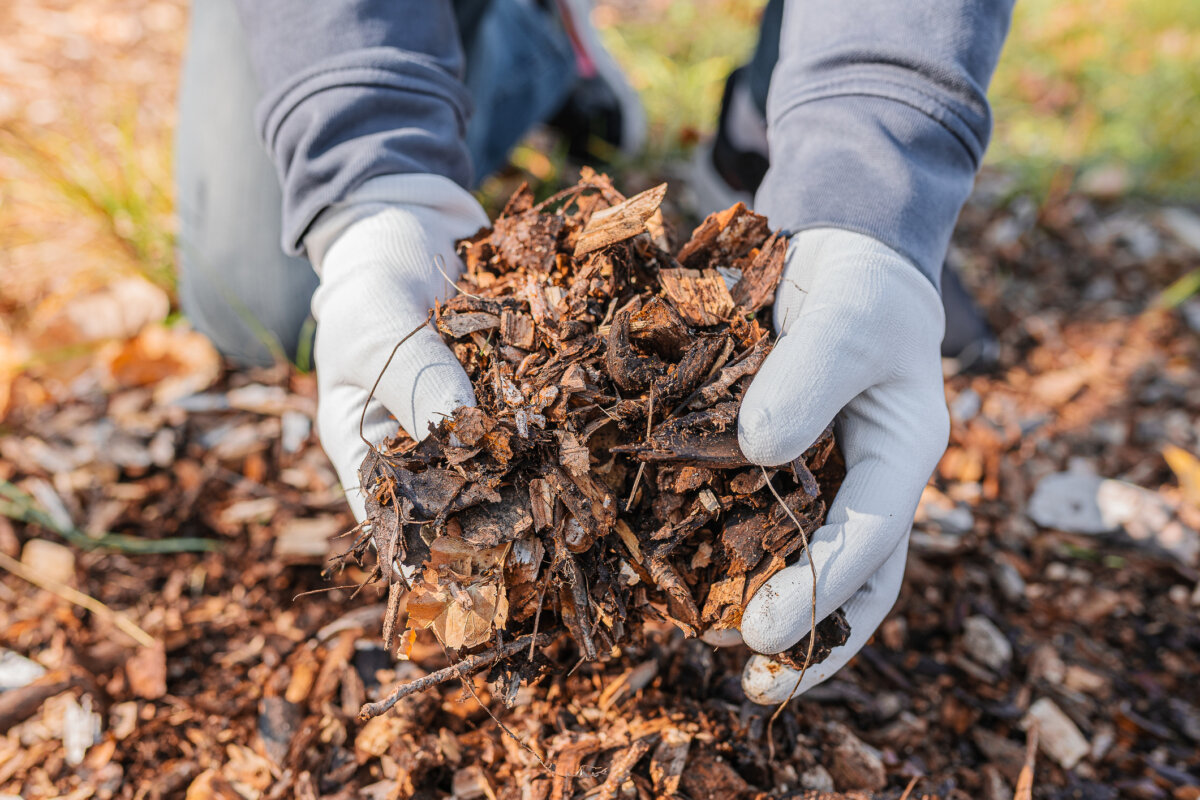
Mulch has great benefits for your landscape, such as reducing both weed growth and drought stress. Here are tips on how to use mulch in your landscape.
Spring is a great time of year to add mulch to your landscape beds. Here are some tips on how to use mulch properly.
Benefits of mulch
- Winter: Mulch insulates soil. This aids soil microorganisms and helps your plants survive cold temperatures. It also helps reduce compaction and erosion from rain storms.
- Summer: Mulch’s insulating property is also helpful in summer. It reduces plants’ water needs and helps to keep soil from drying out, thus reducing the potential for drought stress.
- Mulch greatly reduces weed growth year-round by keeping sunlight from reaching seeds.
- It feeds beneficial soil life, such as earthworms and microbes, which helps keep plants healthy.
- Mulch helps prevent the spread of soil-borne diseases such as black spot and anthracnose.
- And it makes your beds more attractive.
Tips on using mulch
Apply mulch every year. Spring and fall are the best times because the soil is moist and weather tends to be more moderate.
Use organic mulch, such as leaves, straw, wood chips or bark. You could also use cardboard or newspaper, especially if you are sheet mulching (see below). These things break down over time and feed the soil as they do. Synthetic, inorganic mulches such as gravel are useful for pathways but not a good choice for landscape beds. Mulches such as plastic sheets or landscape cloth won’t feed the soil and will break down over time, leaving you to deal with bits of plastic.
Use a thick layer of mulch. Three to four inches is the minimum depth for good weed control. Anything less will not keep the weeds at bay. A thick layer is also an effective insulator against heat, cold and rain.
Use the right mulch for the job. Compost and straw are best for vegetable gardens, while wood chips and bark are better for landscape beds. We recommend medium-textured mulch that contain both wood chips and compost. Fine-textured materials, such as straight compost, tend to pack down too much and crust over. This prevents water and oxygen from penetrating the soil. Coarse-textured materials may be too porous to hold enough water.
Deal with weeds. Mulch is the best thing you can do to reduce weeds in your yard, but weeds are tenacious, so you need to help mulch do its job. Weed the beds before you apply mulch. Try to get the entire plant, including the roots, to help prevent problems later. After you apply mulch, some weeds will still grow through the mulch layer. You will need to remove them by hand.
Don’t apply mulch too close to the trunk of trees and shrubs. Keep it at least a hand’s width away, twice that distance with mature trees. If mulch is too close to the trunk, it can suffocate the roots and build up too much moisture, encouraging diseases.
Fallen leaves are valuable. Leave them where they fall in beds around deciduous trees and shrubs. Leaves decompose over time, providing the soil with nutrients and organic matter. Leaves will break down more quickly when shredded with a lawn mower or other tool. But rake up and dispose of leaves from trees that have soil-borne diseases such as anthracnose.
Resources on mulch
In this video In Harmony co-owner Ladd Smith explains several types of mulch and their uses.
Also check out these websites.
- How to Mulch Shrubs, SF Gate Home Guides
- Mulches for the Home Garden, Missouri Botanical Garden
- Mulching Trees and Shrubs, The Morton Arboretum
- Mulches and Mulching, BBC Gardeners’ World Magazine
- Sheet mulching — aka lasagna composting — builds soil, saves time, OSU Extension
- How to sheet mulch, Lawn to Garden
- Mulching Trees and Shrubs University of Maryland Extension
- Mulching Landscape Trees, Penn State Extension
